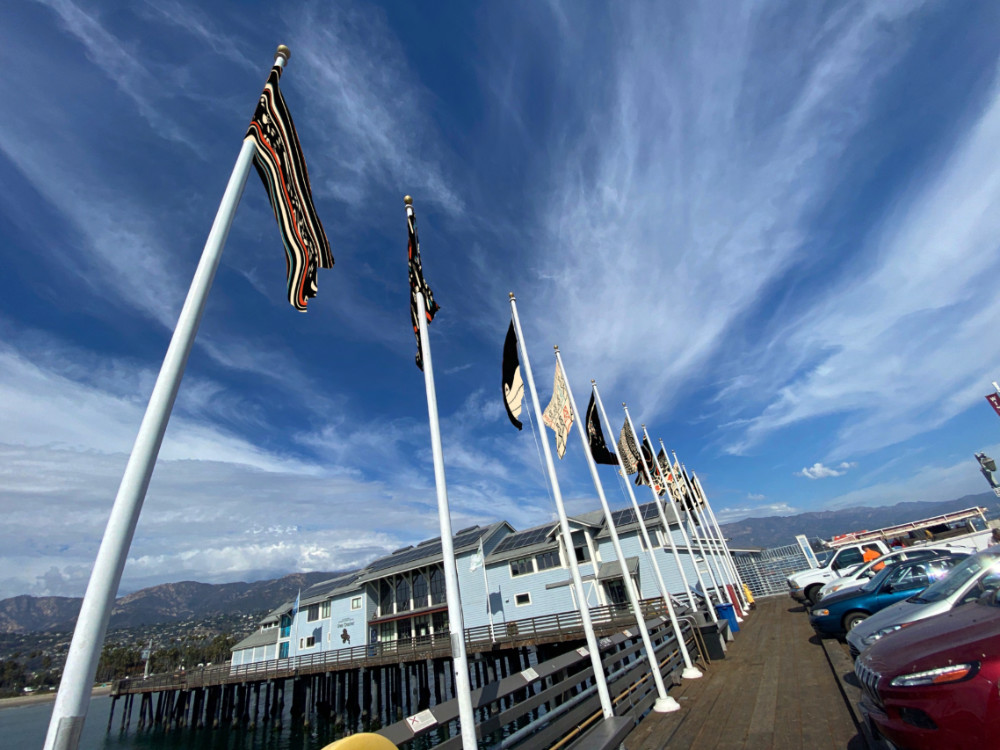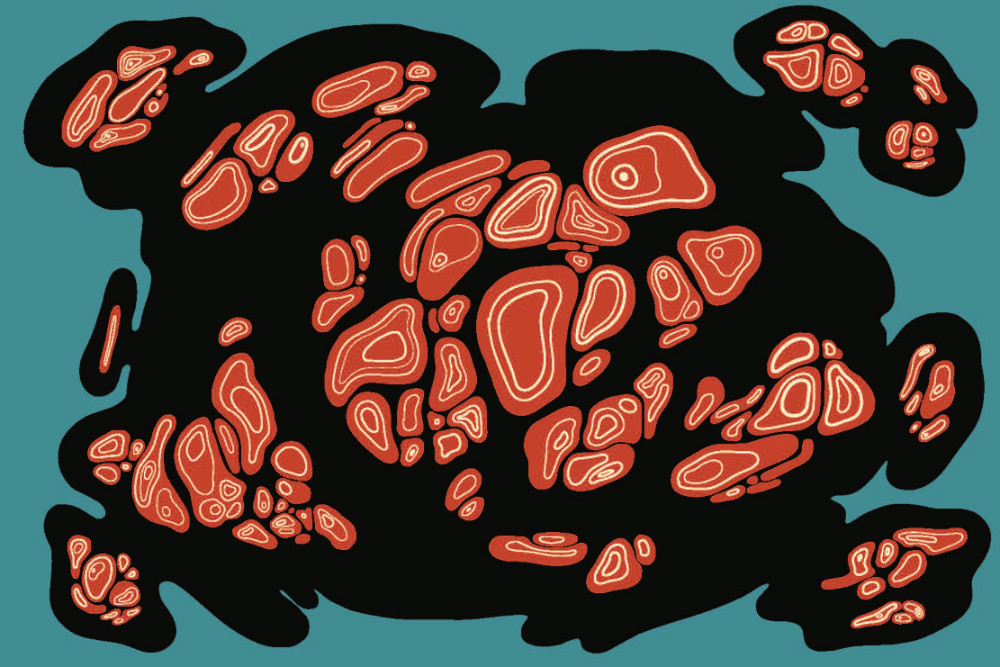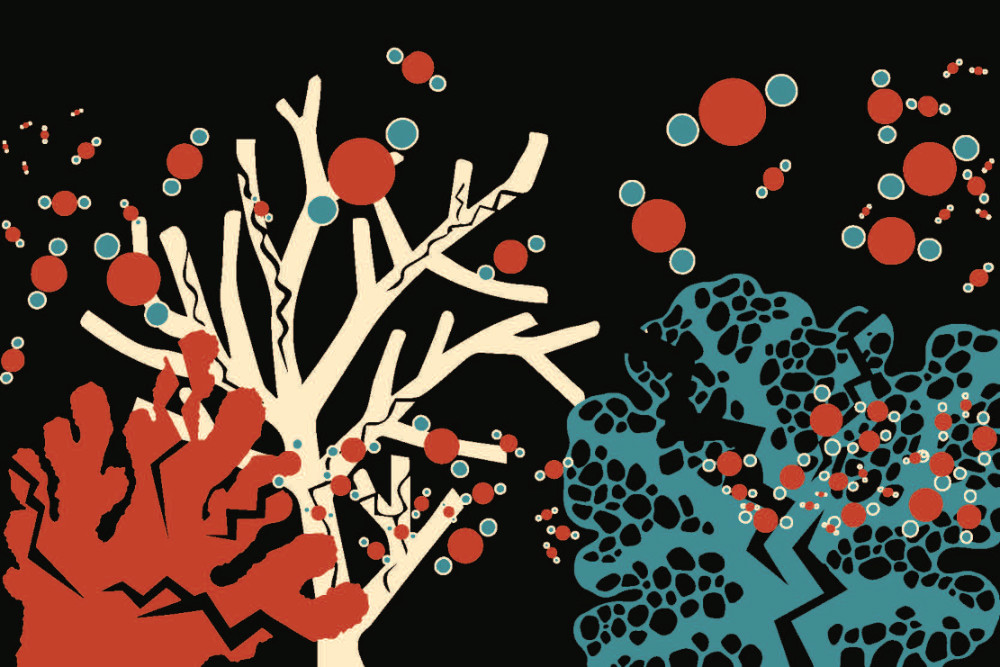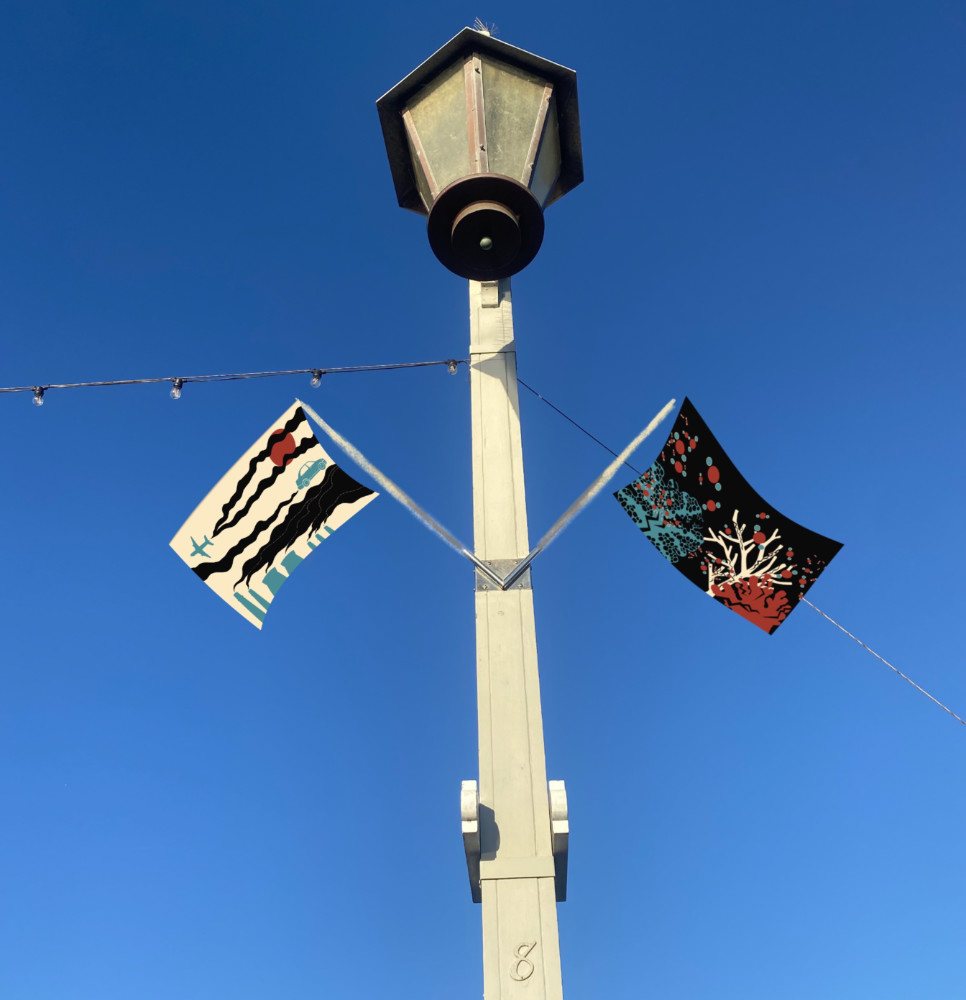A Bold Exhibition

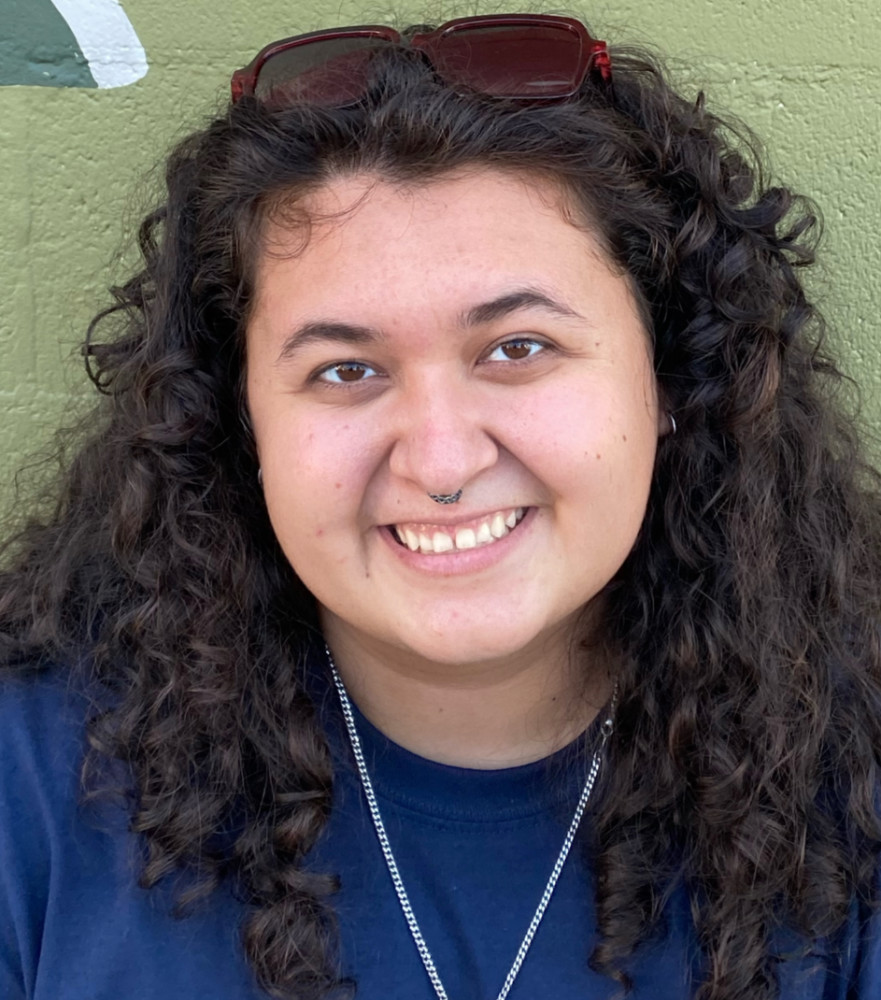
When kids do art projects at school their handiwork hangs on the family refrigerator. When UC Santa Barbara students get creative, their work goes on display on the longest and oldest pier on the Central Coast.
“Seeping Into History: Oil Touches Everything,” a remarkably ambitious exhibit created by students in the Social Print Lab in UCSB’s Department of Art and College of Creative Studies, will run Saturday, March 5, through March 19 at Stearns Wharf in Santa Barbara.
The exhibit, which coincides with the wharf’s 150th anniversary, will explore the area’s long relationship with fossil fuels. The massive oil spill of 1969 off Santa Barbara inspired a national environmental movement that continues today. That long history and the ongoing threat to the environment inspired the students to tackle the development of the exhibition.
If you’re anywhere near Stearns Wharf — the most visited site in Santa Barbara — you won’t be able to miss “Seeping Into History.” With dozens of specially designed flags, brochures and maps, an informational kiosk, digital audio tours and more, the wharf will practically glow with the students’ work.
And what a project it is. The students had to coordinate with various departments in the city of Santa Barbara, the Museum of Natural History Sea Center, the Santa Barbara Museum of Art (SBMA), the Museum of Contemporary Art Santa Barbara (MCASB) the wharf merchants and others to make it happen.
“Yes, it’s very ambitious,” said Iman Djouini, an assistant teaching professor who leads the Social Print Lab. “I think the students who came into it just couldn’t wrap their heads around really what was even possible. The process starts out with public permitting processes and gaining a relationship with local community, specifically the public entities in the local communities.” This later grew into print media and public art.
Anahi Garcia, a third-year art major, acknowledged that she and her classmates — a dozen students from a range of majors — weren’t quite prepared for the level of challenge involved, even if they were selected to participate because of their interest in the project.
“There’s only so much we can sort of know about what we’re getting ourselves into until we’re in the moment and we have to problem solve something,” she said. “And I’ve been so amazed at just how resilient a lot of the students have been through various challenges. Truly creative problem solving has been needed, and I’ve been amazed at just how natural that has come, especially with the interdisciplinarity of this class.”
While the students are getting schooled in civic engagement, the project is ultimately about education. It seeks to tell the story about petroleum in the region — not just the oil spills, but its role in climate change, the impacts on marine life, extraction, usage, history and more. Petroleum is more than just putting gas in our tanks; its ubiquity impinges on nearly every aspect of our lives.
“I think that’s at the core of the social print lab class and the way it was designed,” Djouini said. “The class at its core is very much tied to socially engaged work, and we do that through developing relationships with the public, and engaging with the political dynamics that shape art and cultural production in our community. Additionally, we are a public institution. And so I think making the connection between social and environmental justice in its relationship to our public space is sort of a natural thing. That’s already happening through this exhibition.”
In addition to the flags and information kiosks, the exhibition will include educational workshops for the public. The first, a program for adults in collaboration with MCASB, will include panel discussions on the research and production of the students’ work. The talk will feature UCSB students, hosted at the MCASB location and open to the public. It will be held Saturday, March 12, from 3:30 to 4:30 p.m.
The second, Sunday, March 13, from 1:30 to 4:30 p.m., is dedicated to kids. As part of the museum’s Studio Sundays on the Front Steps, students will create prints for flags that illustrate concerns about climate change and positive ways to raise awareness about our local and global environments.
For the students organizing the exhibition, every aspect — the permitting process, working with multiple organizations, creating content — has been an education. And given the scale and ambitiousness of the project, they’re proud of what they’re about to pull off.
“It’s been really, really fun,” Garcia said. “And I think it’s giving myself and all of my peers a really good experience in networking with people, communicating. We have had mentors who we’ve met with and we’ve worked on our presentation skills. You know, we’ve gone into deep research. We’ve been working together, being communicative amongst ourselves and just growing together.”
